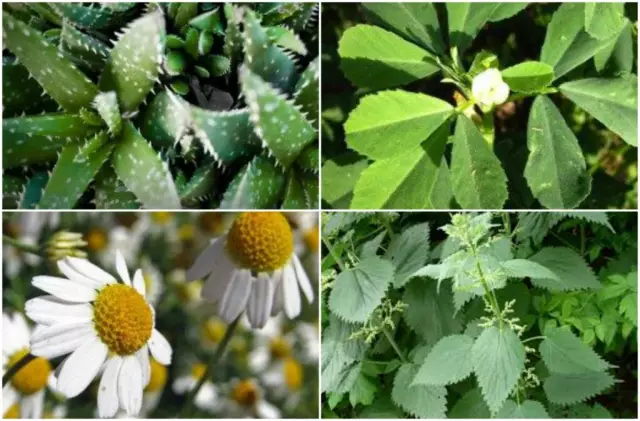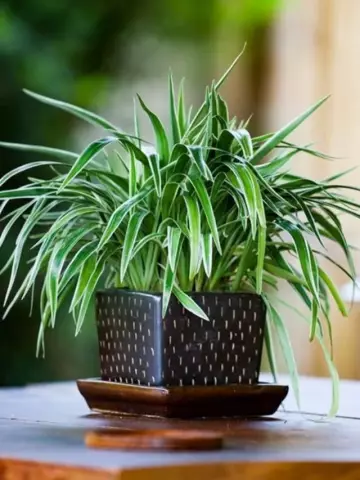- Author Rachel Wainwright [email protected].
- Public 2023-12-15 07:39.
- Last modified 2025-11-02 20:14.
12 indoor plants that don't belong in a nursery
Houseplants should be in every home. They rid the indoor air of excess carbon dioxide and harmful impurities, saturate it with oxygen and moisture, and release substances that have a beneficial effect on health. The microclimate of the nursery is especially in need of improvement, and keeping green “pets” is one of the most effective and convenient ways to achieve this goal.
When growing indoor plants, we must not forget that many of them are unsafe.
Cactus
All cacti have thorns. In many representatives of this group of plants, the needles are easily separated. At the slightest touch, a person runs the risk of getting a large number of almost invisible, but very painful splinters. Obviously, these plants have nothing to do in the nursery.

Source: depositphotos.com
Poinsettia
This bright plant is called the Christmas star for a reason. In Catholic and Protestant countries, it is a symbol of Christmas and plays an important role in festive decor. The top of the small bush looks like a luxurious fire flower, extremely attractive to babies.
Touching the poinsettia (especially picking off its bright leaves) is dangerous. The plant belongs to the euphorbia family. All parts of it secrete caustic juice, which causes burns to the skin and mucous membranes, and often an allergic reaction. Experienced flower growers, when caring for poinsettia, always wear gloves. If there are small children in the house, it is better to refuse the plant altogether.

Source: depositphotos.com
Jatropha
A plant with an interesting stem resembling a narrow-necked jug is another representative of the Euphorbia family. It secretes a pungent juice that can burn the skin. Jatropha seeds are very dangerous: their ingestion into the digestive tract causes severe poisoning. The plant must be kept away from children, and in case of flowering, cut off the flower stalks without waiting for the fruit to set.

Source: depositphotos.com
Palm
Indoor palms are generally harmless, but their leaves often have very sharp, cutting edges that can injure a child's hands. Dracaena and yucca, beloved by flower growers, have a similar feature. Such plants are not suitable for premises in which small children live.

Source: depositphotos.com
Adenium
Thick adenium (desert rose) is a common indoor plant, especially loved by housewives because of its easy maintenance, decorative effect and long flowering. It refers to desert succulents. Today, there are several hundred flowering varieties of the desert rose. All parts of adenium contain poisonous juice. Even its delicate flowers are dangerous for children.

Source: depositphotos.com
Solyanum
Indoor nightshade. Like all plants of this family, it contains alkaloids that can cause severe poisoning. There are especially many of them in bright red and appetizing-looking fruits. There are cases when children ate a large number of such berries, which had very sad consequences.

Source: depositphotos.com
Plants of the aroid family
Green pets such as Dieffenbachia, Calla or Aglonema are found in many homes. These plants are relatively safe, but keeping them in a nursery is still not worth it, since the juice of their wide leaves irritates the skin.

Source: depositphotos.com
Oleander
Oleander leaves have a very bitter taste and are unlikely to be tasted by a child. The danger is represented by bright, double flowers, which you just want to pick. The sap of the plant is poisonous. If the child, having touched the inflorescences, then licks his hands, poisoning cannot be avoided.

Source: depositphotos.com
Ficuses
The juice of all types of ficus has an irritating effect. Fortunately, these plants do not have bright colors that are attractive to an older child. Therefore, ficuses should not be kept only in those rooms where the smallest live.

Source: depositphotos.com
Codiaum
Codiaum (Croton) leaves attract attention with their bright, sunny color. Tearing them off, the child can get irritation of the mucous membranes (if the bitter juice gets into the mouth or eyes). This is not so much dangerous as it is very unpleasant.

Source: depositphotos.com
Euonymus
Indoor variety of widely cultivated ornamental shrub. It has tough, leathery leaves and a bitter bark rich in tannins. The danger to children is represented by rather attractive-looking (but in fact, inedible) fruits. Having eaten just a few of them can cause a child to become seriously poisoned.

Source: depositphotos.com
Gloriosa
A beautiful, lush liana with vibrant exotic flowers. All parts of the plant secrete milky sap, which can cause digestive upset.

Source: rastenievod.com
Chlorophytum, Kalanchoe, aloe, cyperus, fern, abutilon, hibiscus, peperomia, rosemary, mint, as well as plants of the Gesneriaceae family (streptocarpus, gloxinia, uzambar violet) are perfect for keeping in the room in which the baby lives. They are safe and can have a beneficial effect on the indoor microclimate.
Nevertheless, caution will not hurt, especially if the child is still very young and inclined to actively explore the world around him. He might taste the leaves, knock over a low-lying pot, or try to climb up with a vine. To avoid trouble, containers with plants should be placed out of the reach of an inquisitive kid. Lightweight pots placed on walls or suspended from eaves on windows will do. Plant pots in the baby's room should be plastic, not ceramic, so that he does not get hurt by sharp fragments, accidentally breaking the pots.
However, such restrictions are not needed for long. At the age of 4-5 years, the child not only will not deliberately touch indoor flowers, but will also be able to help take care of them, which will be useful for his development.
YouTube video related to the article:

Maria Kulkes Medical journalist About the author
Education: First Moscow State Medical University named after I. M. Sechenov, specialty "General Medicine".
Found a mistake in the text? Select it and press Ctrl + Enter.






